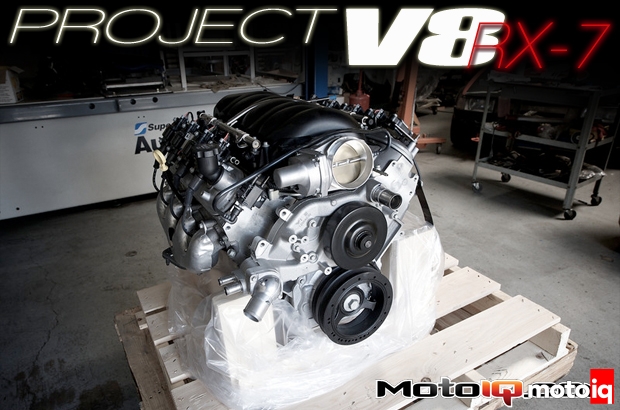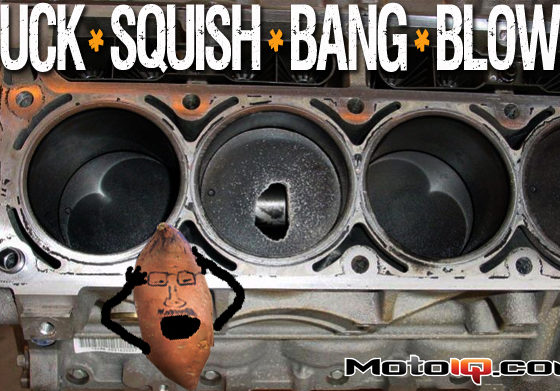,
 |
| The LS3 block is an all aluminum casting with spun iron cylinder liners and steel main caps that trims nearly 60 lbs from the weight of the Chevy V8. It uses a unique casting technique combining investment die casting and sand casting for closer to net finishing and better precision. Although the block is much lighter, it is much stronger and stiffer than the old iron small block, mostly due to modern engineering. |
The old small block Chevy’s oil pan was just that, a stamped steel pan. It had about as much engineering as a cooking pan being a simple sump to catch the oil dripping down from the rest of the engine. Little was thought to control oil under cornering or much of anything except to keep the oil off the ground. It didn’t do that so well either, the cheap stamping easily distorted leading to leaks. So crude a piece is the small block’s oil pan that it spawned an entire industry centered around making improved high performance oil pans. Not so with the LS.
 |
| The LS oil pan is a structural piece that further stiffens the bottom of the block. Thus it is a heavy casting with thick walls. We used an LS2 pan because it was lower profile to make mounting the engine in the RX-7 easier. The pan is heavily baffled to help prevent oil starvation under cornering and to make the pan even stiffer. There is also a windage tray to strip the oil cloud away from the spinning crank and rods. This frees up power and reduces oil consumption. It also reduces oil temperature and helps keep the oil in the sump deaerated. |
To further fortify the bottom end, the LS has a beefy cast aluminum oil pan that structurally stiffens the lower part of the block making it much stronger, another common Japanese and racing engine practice. The oil pan has deep cast in baffles to control oil slosh and possible starvation under hard acceleration and cornering. The cast in baffles also greatly contribute to stiffness and structure. There is a windage tray that helps strip the cloud of oil flying around the inside of the block, whipped up by the crank, rods and pistons. Stripping the cloud reduces frictional losses and frees up power. It also works to reduce oil consumption and temperature. Windage trays are a common trick found in racing pans and, I hate to keep saying it, Japanese engines. The LS pan’s thick structural rail has a groove for a positively sealing o-ring doing away with problematic leaky paper gaskets.
To further control windage, a lot of analysis was applied to the block’s internal aerodynamics and crankcase partitioning. By opening up some areas of the block’s main webbing to an engineered geometry, windage was greatly decreased improving oil consumption and improving power.
 |
| This bottom view of the LS block shows the stiff deep skirts and the multiple points where the main cap bolts into the block structure. The rear steel main cap is in place and you can see how stiff and ridgid this structure is. |
The cylinder liners are centrifugally cast gray iron liners. Gray iron has a high graphite content which gives better lubricity of the bore, less friction, better ring seal and longer life. The centrifugal casting technique makes for a finer grain structure improving strength, dimensional stability and wear resistance. The improved mechanical properties of spin cast iron also allow the liners to be made thinner for better heat transfer. The liners are cast in place making them integral with the block’s structure. When combined with the engine’s 92 mm stroke, the 103.25mm bore gives a displacement of 6.2 liters of 376 cubic inches. FEA analysis proved that previous machining methods that left a sharp radius inside the bottom of the bore also created a big stress riser that weakend the block. Simply rounding this radius greatly improved strength in the block’s lower main cap area.



